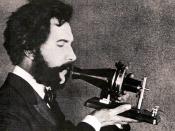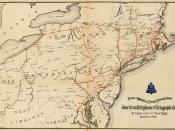The Breakup of AT&T
The institutional relationship between government and business can be best defined as a marriage of convenience. That is, the amount of regulation, control, and attention paid to business by the federal government has historically depended on both the political climate and the amount of impact the business has on the public good, as well as the national economy.
Since the advent of the railroads as the first "big business" in the early 1900s, government has employed, for the most part, a fairly case-specific approach to the regulation and control of these corporations. Only when these corporations became so large that they enjoyed a monopoly over their competitors, or when they dealt in unscrupulous business practices, then the government intervened and began to regulate business. The Sherman Anti Trust Act of 1890 and the Clayton Act of 1914 represent this fear of unabated business growth and abuses of power that could not be controlled or regulated on the state level alone.
Herbert Knox Smith, U.S, director of corporations, best described the overriding governmental attitude towards the rise of big business when he said that "it is not the existence of industrial power, but rather the misuse, that is the real problem." While federal legislation attended to these power issues for a time, the overall governmental approach to big business was just that - if power was not misused or abused, the size and scope of corporate reach and control was not something that needed to be addressed and regulated by the federal government.
This was the overarching theme of the relationship between government and business for the large part of the 20th century, one of laissez-faire control and regulation in return for proper use of power and an adherence to the laws governing businesses. One corporation that...


